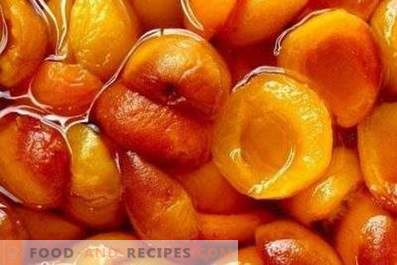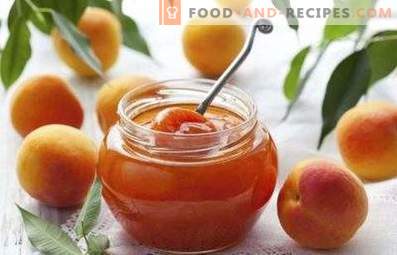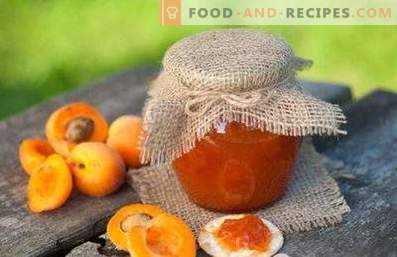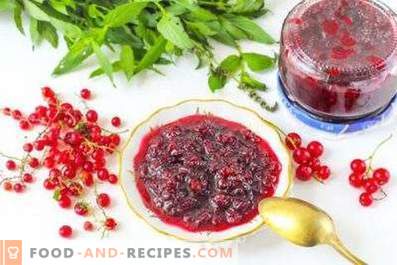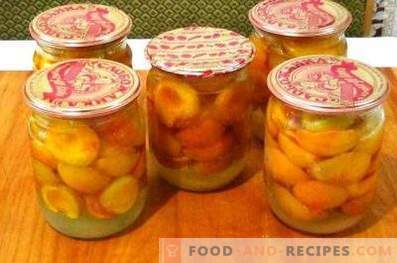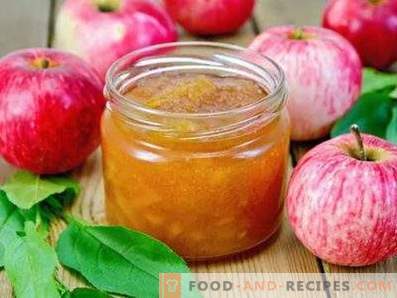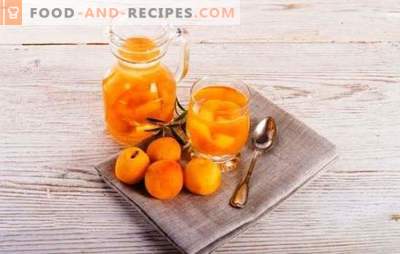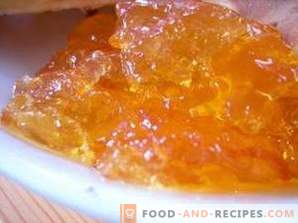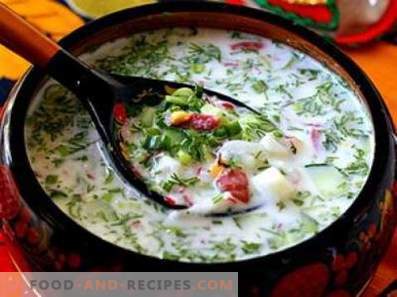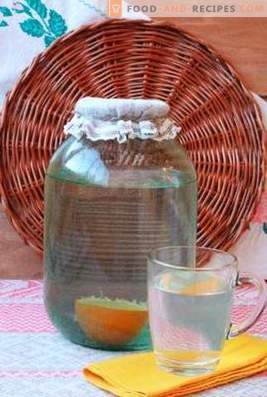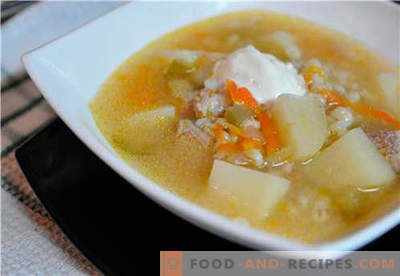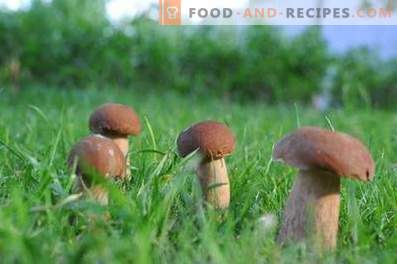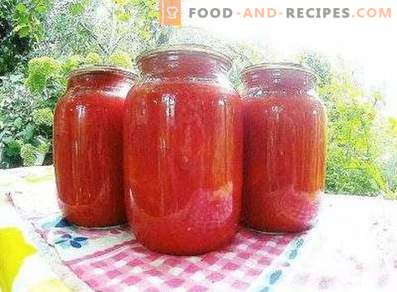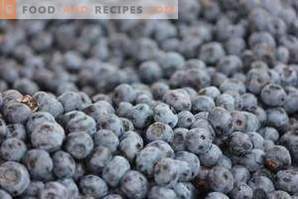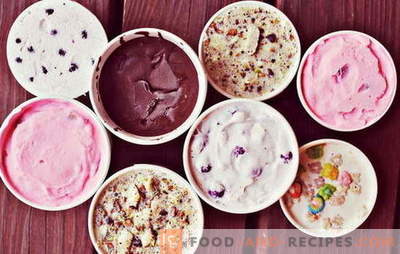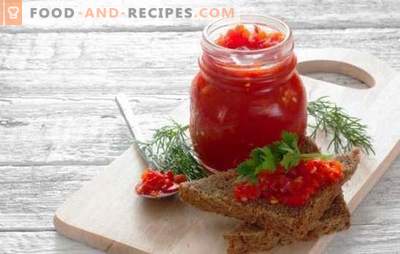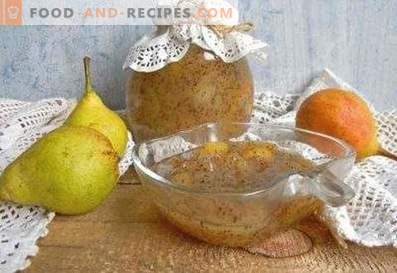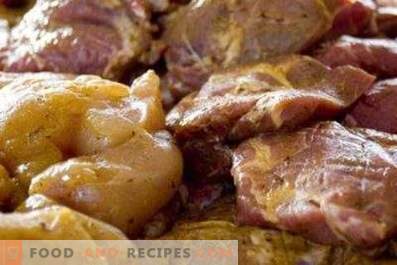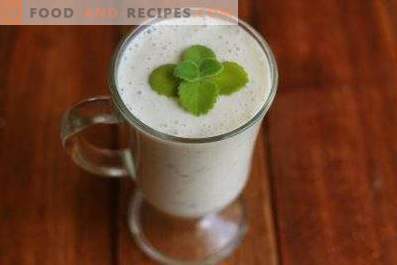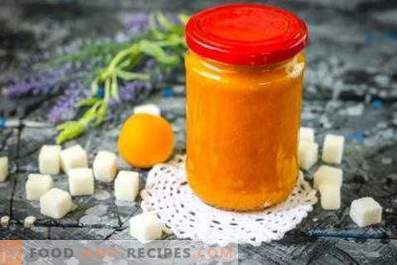
Apricots contain many useful substances that are preserved during heat treatment. They help strengthen the cardiovascular system, eyesight and immunity. People have long learned to harvest these fruits for the winter. This can be done in different ways: freeze, dry, boil with sugar. Among apricot desserts that can be made for future use, a special place is occupied by apricot confiture. Its tender but thick texture allows it to be used not only as an independent delicacy, but also as an addition to pancakes, pancakes, ice cream and other desserts.
Cooking Features
Cooking confiture from apricots is not a difficult process, but to obtain the expected result, you need to know a few subtleties.
- Mature apricots often have a rough skin. Once in the confiture, it will spoil its taste. It will be easy to peel the fruits if you put them in boiling water for 20 minutes, then immediately put them in a container with cold water.
- Apricot confiture can have a different consistency. It usually requires small or large pieces of fruit floating in thick syrup. Usually, the fruit for this purpose is peeled and crushed with a knife. Fruits can be crushed and blender, but not to homogeneity. Some prefer to cook apricots in halves, not cutting them into several pieces. If the fruit is ripe, they will have time to boil soft and without additional grinding.
- Apricots contain pectin, which allows making confiture from them without adding gelling components, but it will take a long time. It is possible to shorten the cooking time and get more apricot confiture from the same amount of ingredients if you add pectin, gelatin or similar products to dessert.
- When using gelling components, pay attention to the directions on the packaging. Such products do not always have the same composition, and recommendations for their use may vary slightly. If the information on the packaging is slightly different from the recipe, the manufacturer's recommendations should be considered as priorities.
- Do not use aluminum cookware for making jam. Upon contact with acids, this material begins to release harmful substances.
- If you are preparing apricot confiture for the winter, jars for it and lids for them must be sterilized.
The storage conditions for apricot confiture depend on the recipe selected. Most often, the dessert is well worth it at room temperature, but after opening the can it can only be stored in the refrigerator and not more than two weeks.
The classic recipe for confiture from apricots
Composition (for 2, 75-3 l):
- apricots (unpeeled) - 1, 5 kg;
- sugar - 2 kg;
- water - 0, 25 l.
Method of preparation:
- Wash apricots.
- Boil the water. Dip the apricots in it. Blanch for half a minute.
- Put the fruit in a bowl of cold water, peel it.
- Cut in half, remove the pit.
- Pour the sugar into the bowl in which you will cook the confiture. Add water. Heat over low heat, stirring until sugar is completely dissolved.
- Allow the syrup to cool to room temperature.
- Put the apricot halves in the syrup.
- Place the basin on the stove. Over medium heat bring to a boil. Cook for 5 minutes, removing the froth protruding to the surface.
- Remove the pelvis from the fire, cover with gauze to protect it from insects. Leave to cool down for at least 6-8 hours.
- Bring the confiture to a boil and simmer until its consistency is optimal. If apricots do not form a single composition with the syrup, float to the surface, the confiture is not ready yet.
- Sterilize the jars and metal lids that fit them.
- Fill jars with apricot confiture.
- Roll up metal caps.
It is possible to store the cooled confiture in the pantry. If you plan to eat it in the near future, the banks can be closed with nylon covers, but then they can be stored only in a cool place and not more than 2 weeks.
Confiture of apricots with pectin
Composition (for 1, 25 l):
- apricots (peeled and peeled) - 0, 7 kg;
- sugar - 0, 75 kg;
- water - 150 ml;
- pectin - 1 packet.
Method of preparation:
- Mix pectin with 50 g of granulated sugar. Set aside - the mixture will be required at the last stage of preparation.
- Boil the water. Put sugar in it. Boil, stirring, until when you raise the spoon from the container where the syrup is brewed, a thin sweet “thread” will not reach behind it. It will take 10-15 minutes.
- Peel apricots from the skin and bones. Cut into small pieces of approximately the same size.
- Dip the apricot pieces in the syrup, cook for half an hour over low heat.
- Add the sugar mixed with pectin while mixing the confiture.
- Continue cooking for 5 minutes, then remove the bowl of confiture from the heat.
- Spread the ready-made dessert over sterilized cans, hermetically close them with pre-boiled metal lids.
Confiture cooked according to this recipe can be stored at room temperature. It has a thick jelly-like consistency, which allows spreading it on bread.
Confiture of apricots with oranges
The composition (1, 75 liters):
- apricots (without stones) - 0, 9 kg;
- sugar - 1 kg;
- oranges - 0, 3 kg;
- water - 100 ml;
- gelatin - 10 g.
Method of preparation:
- Wash and dry apricots. Cut the fruit in half, remove the bones from them.
- Wash the oranges. Blot with a napkin. Without cleaning, cut into small cubes, at the same time getting rid of the bones.
- Using a blender or meat grinder, chop the apricots to a puree state.
- Mix with sugar, put on slow fire.
- When the berry mass begins to boil, add the oranges. Continue cooking for 30 minutes.
- Dissolve the gelatin in 100 ml of cool water, pour into the fruit mass, stirring.
- Warm up the confiture, continuing to stir it, for 2-3 minutes.
- Distribute the confiture to the prepared banks, seal the cork.
The slices of oranges in thick apricot jelly look extraordinary and make the delicacy very appetizing. The dessert prepared according to this recipe has a unique taste and a pleasant aroma.
Confiture of apricots can be prepared according to different recipes. The cooking technology of this dessert for the winter may not be the same. Knowing the basic principles of cooking this delicacy, adhering to the recommendations accompanying a particular recipe, even an inexperienced hostess can cook an exquisite apricot confiture.
